Best Soil for Succulents – DIY and Pre-Mixed Options
Having well draining soil is crucial for growing healthy succulents.
Their roots won't thrive in a dense, compact soil. They need a soil that dries out quickly and provides plenty of air flow around the roots.
Over the years, I've done a lot of research about the best type of soil for succulent container gardens, I've tried quite a few approaches, and found that some of them work much better than others.
Succulents and Sunshine is reader supported. We may earn a commission, if you purchase through links on our site, such as Mountain Crest Gardens, Amazon, or Etsy. We only promote products we use and trust.
While it's important to learn how to water succulents properly, using a well-draining soil is a much bigger contributing factor than people realize.
Really quick, be sure to grab my FREE watering cheat sheet so you can learn how to tell if your succulents are getting too much water (and how to save them if needed).
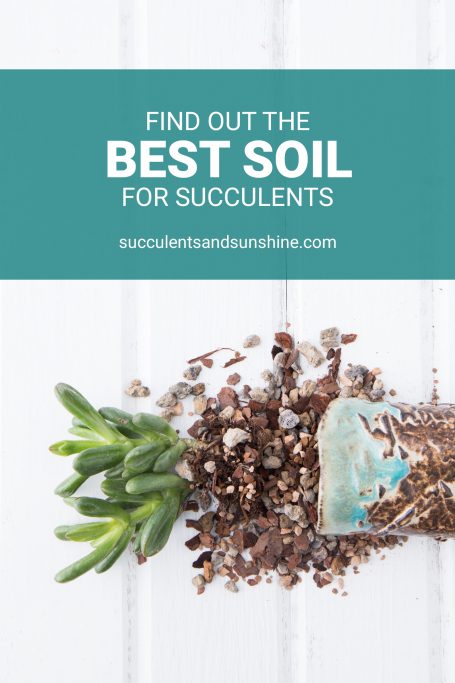
Criteria for “Good” Succulent Soil
The best soil for succulents will hold enough water for the roots to absorb what they need, but dry out quickly.
Sitting in wet soil for long periods of time will cause succulents to take up too much water leading to root rot and eventually killing the succulent.
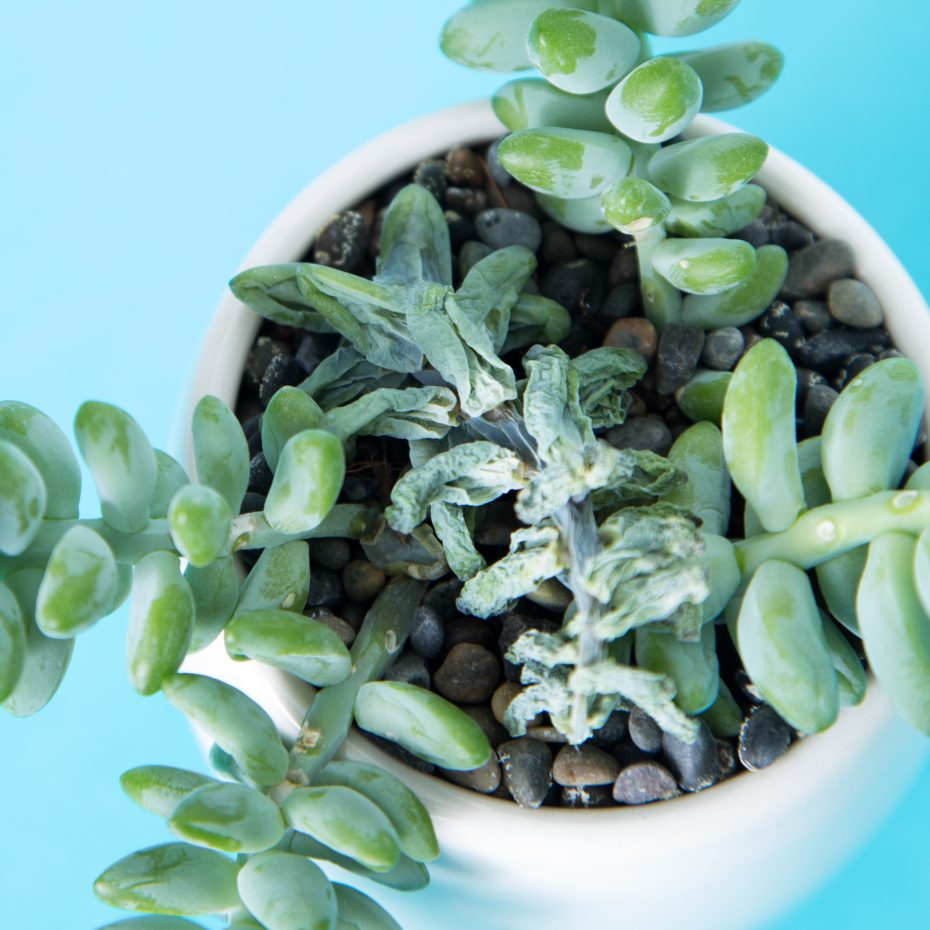
Not a pretty sight!
The area where you live, the specific location where you keep your succulents, the type of succulent, and the size of your planter will play a role in determining what type of soil your succulents need.
The Perfect Indoor Succulent Soil
Indoor environments don't offer as much light or air flow, so soil naturally dries out more slowly.
For over 10 years, I've been using a gritty soil mix receommended by another succulent grower.
A critical part of the soil recipe is the particle size. Everything in this mix is screened so the particles are about 1/4" or 6mm in size. The recipe includes:
- 1 Part Pine Bark Fines
- 1 Part Turface (an absorptive rock)
- 1 Part Crushed Granite
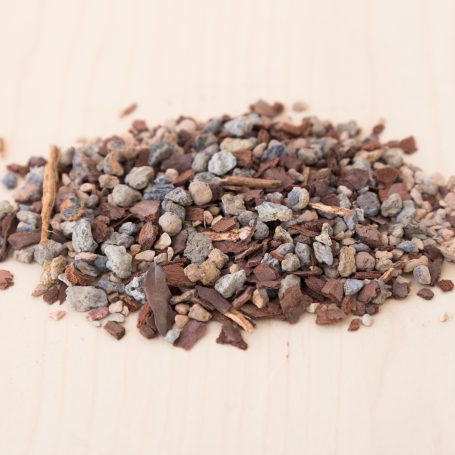
Why it works
Succulents will grow in a variety of soils, but this mix is ideal for several reasons.
The large particle size allows water to flow through the soil easily, meaning you won't get pockets where water stays trapped in the soil. This also means there is plenty of room for succulents to send out roots without being in constant contact with wet soil.
The pine bark provides an organic element and holds water, but take a long time to break down so the soil lasts longer than a typical potting soil. The Turface absorbs some of the water and slowly releases it.
Ultimately, the soil absorbs enough water for the succulents to get what they need, but doesn't stay wet to the touch or soggy.
Pre-mixed option
Mixing this soil yourself can be time consuming. However, you can now buy a ready-to-go bag of this succulent soil from Bonsai Jack.
Jack is an expert when it comes to soil, and this mix in particular is amazing for succulents. I've been working with Jack since 2015 to perfect and improve this soil mix and we have hundreds of happy customers!
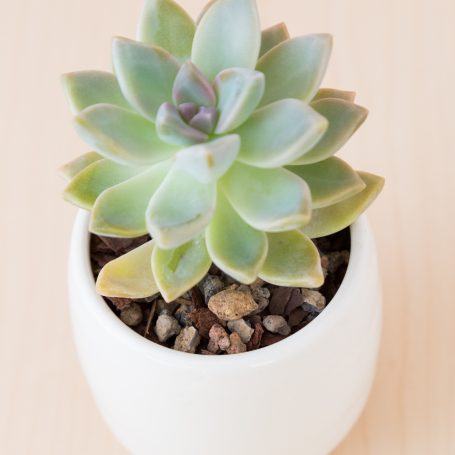
The particle size and consistency of the Bonsai Jack mix are exactly right for indoor succulents. For example, while Turface is usually only available in 1/8″ particles, Jack has been able to get a 1/4″ size, specifically to use in this mix.
I highly recommend using this Bonsai Jack Succulent Soil for your indoor succulents. Especially if you tend to over water, this soil will help your succulents thrive!
Another fantastic pre-mixed option is Magic Succulent Soil, created by Andrea from Just Succ It.
After using a gritty mix for a while, Andrea found it dried out too quickly for her liking and set out to create a soil that was still well draining but stayed wet a bit longer.
This mix also includes worm castings which promotes the growth of healthy microroganisms and help prevent your succulents from getting pests.
Both Bonsai Jack's Succulent Gritty Mix and Magic Succulent Soil are great options for indoor succulents.
However, if you'd rather not purchase this “gritty mix” online, it is possible to make it yourself. You should be able to find the ingredients at most nurseries.
Turface is found at most auto parts stores as a product called “Oil-dri,” which mechanics use to clean up oil spills.
If you don't have access to these exact materials, you can substitute other ingredients. Just keep in mind the ratio of inorganic to organic material needs to stay the same.
For example, if you use another type of bark, make sure you mix in another type of rock (such as pumice) as well. The really critical piece, as I mentioned above, is to ensure that the particle size is always roughly 1/4″ or 6mm.
What about the bagged succulent mixes at big box stores?
If you aren't able to find any of the soil components listed in the recipes above, the next best solution is to pick up a bag of “succulent and cactus mix” at your local Lowes, Home Depot or Wal-Mart.
This soil works fairly well for succulents. However, it doesn't drain especially well, and it tends to repel water when it's completely dry. I highly recommend adding in a rock material such as pumice, crushed granite or even perlite.
Perlite for Succulents
Adding perlite to your succulent soil mix can help it be lighter and drain better. One potential downside to perlite is that it crushes easily. So over time the perlite breaks down into a powder.
Usually though, you'll be refreshing your soil every couple years and you can replace the perlite as you do so.
Pumice for Succulents
There's a great pumice supplier, General Pumice Products, that has created a lot of popularity around using pumice an amendment for succulent soil.
As mentioned above, if you're using a more organic soil I highly recommend adding in pumice as it's much more durable than perlite.
You can also plant your succulents in exclusively pumice, though you'll want to be careful with your watering frequency.
Pumice is very porous and traps water in dozens of holes in each particle. This can work well for succulents as pumice doesn't "feel" wet like a traditional potting soil and it allows for more airflow around the particles, similar to the gritty mix.
However, it does trap a lot of water so you want to make sure it dries completely before watering your succulents again.
Sand in Succulent Soil
Coarse sand can be used in succulent soil recipes. Remember from above though, look for particles 1/4" (6mm) or larger.
Using a fine grain sand, such as beach sand, can actually prevent your soil from draining as well because it is so dense and can suffocate the roots.
Do I need to repot my succulents right now?
If your succulents are currently doing well in the soil they're in, don't repot just yet. As I said in the beginning, the right soil for your succulents depends on your climate, as well as the location in which you keep your plants.
In other words, if it's working… stick with it.
On the other hand, if you've found that your succulents are frequently dying, and you can't quite figure out what's going wrong, soil is a great place to start.
While replacing your soil mix may not solve all your problems, your succulents will be much happier in a soil that drains well and has plenty of air flow around the roots.
Repot new succulents in new succulent soil
As soon as you bring home a new succulent, repot it in new soil as soon as possible, removing most of the soil from the store pot. Many common problems with succulents come from keeping succulents in their original store-bought soil.
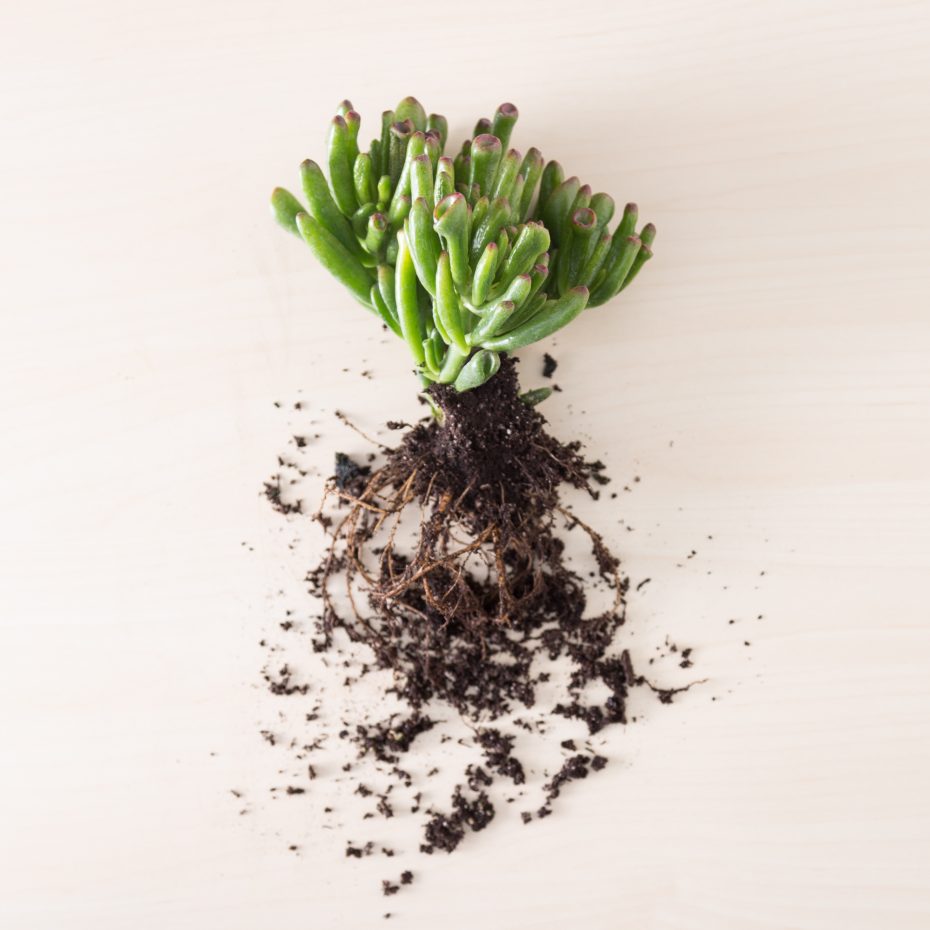
Soil from the store poses two main problems. First, succulents purchased locally tend to be root-bound (meaning the roots fill up most of the pot). If you simply remove the succulent and place it in a new pot, the roots will have a hard time spreading.
Second, most nurseries sell succulents in soil that is not designed for long-term growth. Or at least not long term anywhere other than a greenhouse.
This is because large nurseries and growers generally use the same soil for all their plants. They want a soil mix that will work for almost anything. When succulents are small, they need more water, so dense soil (like regular potting soil) works at that stage.
But leaving succulents in this soil for too long can quickly cause a succulent to rot–or in some cases, prevent it from getting the water it needs.
Peat moss is the primary ingredient in most potting soils. When the moss dries out completely, it tends to repel water.
If you don't let the water soak on top of the soil and start to penetrate the peat, the succulent won't get any water. The water simply runs down the sides of the pot and out the bottom.
So please, for the health of your plant, replant your succulents as soon as you can after purchasing. They will greatly appreciate the healthy new soil and room for their roots to spread.
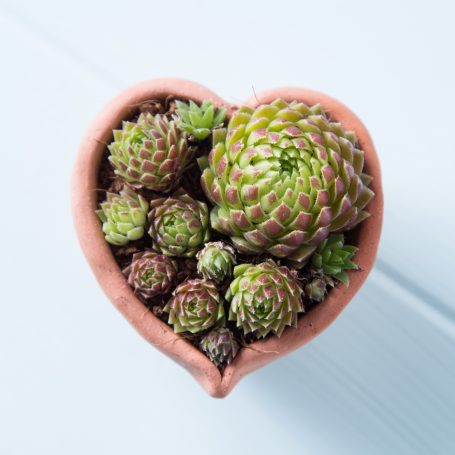
The soil you use for your succulent is just as important as the frequency of your watering.
Take a moment to examine the soil you're using for your succulent, and see if you a change might be in order. And if you haven't already, download my free cheat sheet to see what it looks like when your succulents need more or less water.